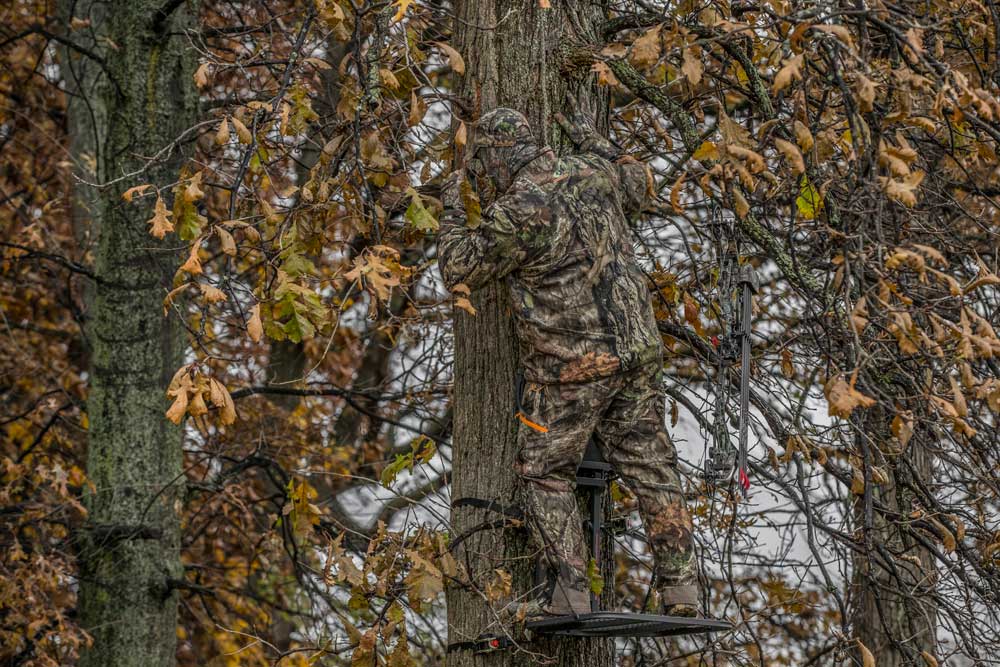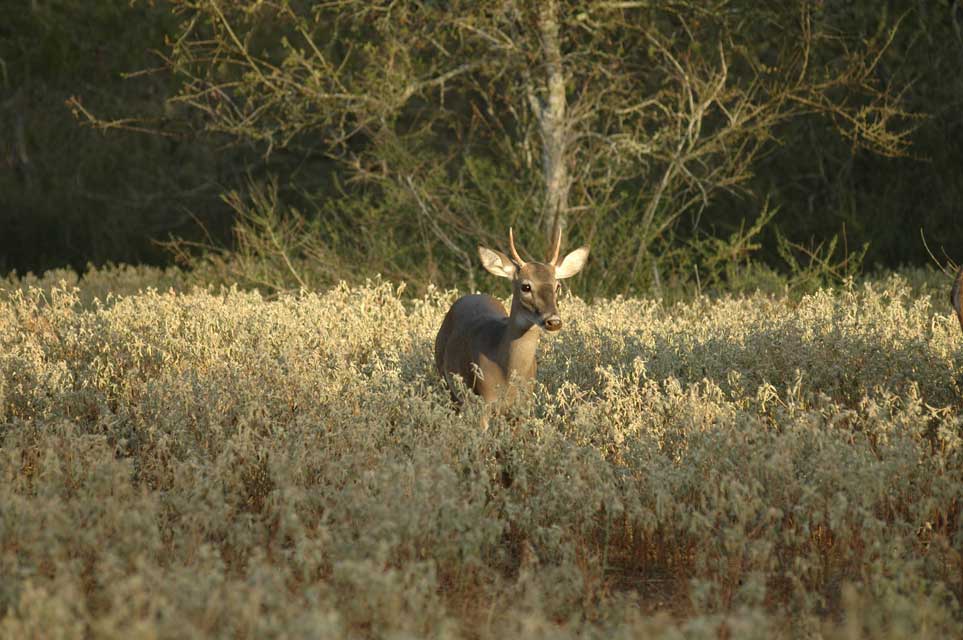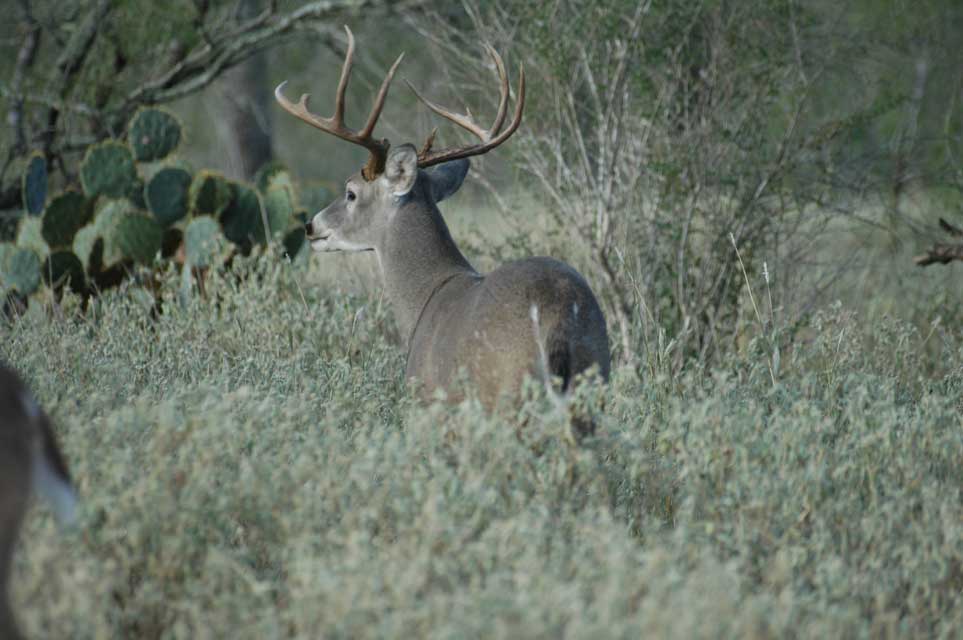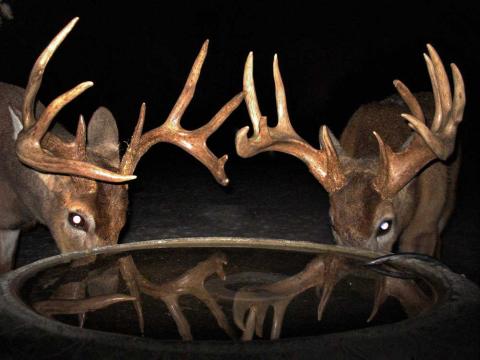Bob Humphrey
Age, population density and personality all influence how and when bucks move within and out of their home range.

The sound of an approaching deer interrupted my daydreaming on a slow, sunny afternoon. The sound soon materialized into a yearling buck sporting a symmetrical four-point rack, putting me in a more relaxed state. He was not on my hit list, but watching deer in an undisturbed situation is always enlightening.
His movement seemed somewhat random as he paused frequently, looking this way and that as if unsure of which way to go. He stood and stared for some time toward the sound of a squirrel bouncing along the forest floor, then flicked his tail, turned and continued along a zig-zaggy course until he was out of sight and eventually hearing.
A lot of deer hunting comes down to luck, being in the right place at the right time. We do our best to predict where the deer might go, and when, but so often it seems to be a random event. But is it? Are deer just traveling randomly across the landscape in whatever direction they are pointed in, or do they have a particular destination in mind? As is often the case, the answer usually lies somewhere in between, and can vary from one circumstance to the next.
Dispersal
Dispersal serves several purposes. It keeps areas from getting over-crowded and it is nature's way of ensuring sufficient genetic diversity to prevent inbreeding. Despite what some might have you believe these days, there is a distinct difference between boys and girls, even when it comes to dispersal. Does generally stay pretty close to home as they grow up while bucks are far more likely to leave their natal home range at some point, and even wander away from their new home range once it is established.
There are advantages and disadvantages to both strategies. Staying close to home gives deer the selective advantage of being more familiar with their environs, some of the dangers and most of the escape routes and protective cover. Leaving potentially exposes them to greater danger, but for bucks, the benefits often outweigh the costs.
Yearling Buck Dispersal

We still do not fully understand the precise mechanism that drives it, but at some point yearling bucks strike out and leave their natal home range for good; at least most do. It could be driven out by its mother, wanderlust associated with the rut, or negative social interaction with other males. The most recent research seems to suggest the latter. As mom begins to attract suitors, those older, larger males drive off the younger bucks. Get beat up, chased or harassed enough and leave town for less stressful environs.
This often coincides with the onset of the rut. The young buck’s physiology is telling it that it is time to seek a mate, but it lacks experience. This might also drive yearling dispersal. Regardless, yearling bucks disperse far more often (at a rate of about 70 percent) and farther (average 5-7 miles) than does.
This dispersal also occurs right around the time we're looking to fill our tags. Suddenly the woods are filled with post adolescent bucks, hopped up on testosterone and wandering through unfamiliar territory. That, in part, explains why yearlings make for easier targets and often the majority of the buck kill in some states.
Annual Dispersal
Assuming they survive their second hunting season, bucks eventually establish a new home range. Size and fidelity vary with circumstances and individuals, but they generally settle into an area where they will spend 90 percent of their time over the course of a year. Within that, a core area where they will be more than half the time. If you can figure that out, your odds of encountering that deer go up. But it’s the other 10 percent that sometimes gives hunters a little edge.

At some point during the rut, adult bucks strike out in search of a mate. They strike out on excursions that could lead them a mile, 5 miles or even 10 miles from their core area, depending on things like habitat, deer density, age and sex ratio and the individual personality of the deer.
Recent research suggests this does not occur quite as much as we once thought. The bucks are indeed on their feet moving farther and wider than they ordinarily would, but still mostly within their annual home range. Whether it is within or without, these excursions typically last only a day or two, which coincides nicely with the average time a buck will court a doe until she stands for him and allows him to breed. Sometimes they last longer, which could be a buck having difficulty finding a mate, a doe playing hard to get or too much competition.
Another interesting thing we’ve learned from bucks wearing satellite telemetry collars is that most bucks have two or more focal points - between 60 and 140 acres in size - within their home ranges that they revisit frequently, about every 20 to 28 hours. Even more interesting, researchers found the focal points of several individual bucks overlapped during peak rut. Most likely, the bucks are targeting doe concentrations, and because does come into estrus for about 24 hours, the researchers speculated bucks might be spacing their visits to assess female receptiveness.
Several things can be taken away from this by the hunter. First, where there’s smoke, there’s fire. Find the does and the bucks will come. Next, try to figure out how they will get there. Studies have shown that as hunting (or any human) activity increases, deer move more in thicker cover. Find those densely vegetated travel routes and you could be in business. Third, don’t give up hope. Your target buck may disappear for a day or two during the rut but unless he fills someone else’s tag, he’ll soon come back home. Meanwhile, someone else’s target buck may wander into your shooting lane.































